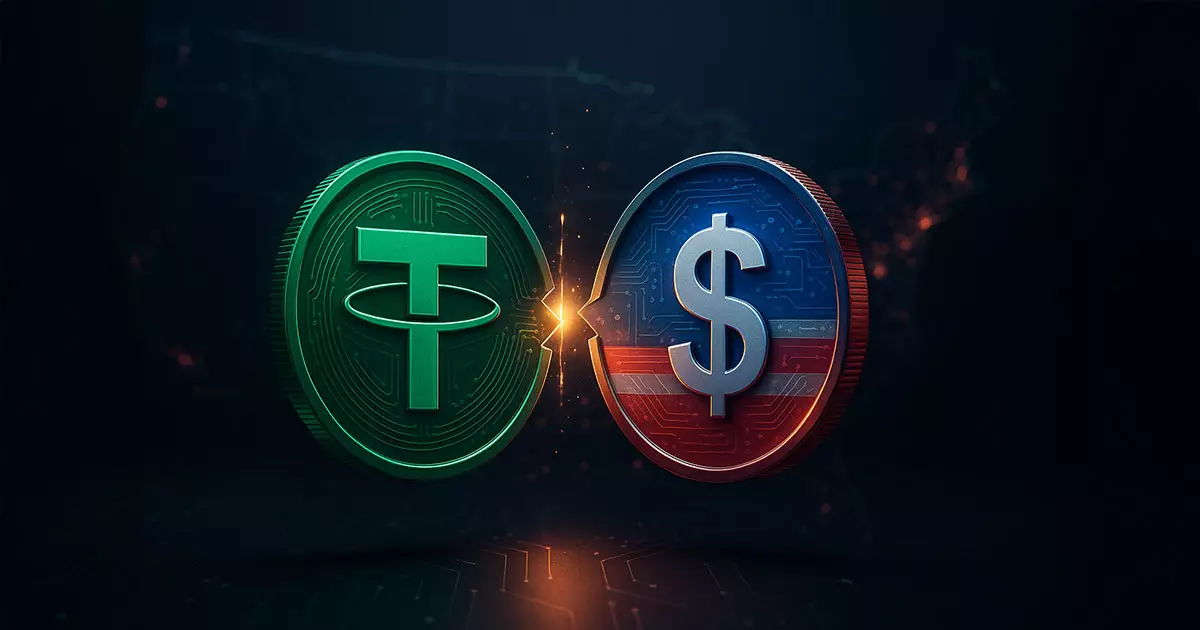In an era where digital currencies are revolutionizing the landscape of finance, Tether’s CEO, Paolo Ardoino, announced a bold initiative during an interview with Bloomberg. Tether is contemplating the launch of a domestically issued stablecoin tailored to the needs of the U.S. market. This consideration coincides with the U.S. government’s ongoing attempts to navigate the complex waters of stablecoin regulation through the Guiding and Establishing National Innovation for US Stablecoins Act, known colloquially as the GENIUS Act. While enhancing compliance and regulatory clarity is paramount, one must observe the nuances of this endeavor and its potential ramifications in a country where financial instruments multiply daily.
The Diverging Paths of USDT and a New Domestic Stablecoin
Tether’s USDT has established itself as the go-to stablecoin in emerging markets. At the heart of its utility is the need for financial inclusion, particularly for the unbanked populations of Sub-Saharan Africa and parts of Asia. Nevertheless, Ardoino emphasizes that, despite USDT’s prevailing presence, the domestic stablecoin will necessitate a “different feature set.” This implies that U.S. consumers may require distinct functionalities such as enhanced transaction speeds or integration with local banking systems, catering specifically to a market flooded with existing payment solutions.
As the world’s financial infrastructure evolves, America finds itself at a crossroads. While Ardoino acknowledges the importance of stablecoins within the U.S. landscape, he asserts that efficiency in transactions may not be their primary purpose. He seems to recognize an essential truth: in a country where traditional methods remain robust, stablecoins will need to carve out their niche, possibly revolutionizing areas like remittances or cross-border transactions that presently lack efficiency.
Emerging Economies vs. the U.S. Market: Distinct Needs
One glaring observation is Tether’s focus on emerging economies where the need for stability supersedes the breadth of available payment systems. Dedicating resources to help the most vulnerable populations—those unbanked adults who often resort to remittances to sustain their livelihoods—is commendable. It unveils a critical reflection on the status quo of financial accessibility in developed nations, which often overlook the necessities and intricacies of those in less secure economic situations.
Conversely, the U.S. boasts a plethora of accessible banking options, leading to question the actual necessity for a domestic stablecoin. In fact, with a myriad of already established financial instruments available, one must wonder whether a domestic stablecoin might simply be an additional complication rather than the much-anticipated remedy. Ardoino claims the U.S. requires a different approach, but will this lead to genuine innovation or just another digital tool layered into a dense financial landscape?
Tether vs. Regulatory Frameworks: The Battle for Compliance
Tether’s navigation through regulatory frameworks is of paramount importance, particularly in light of the GENIUS Act aimed at protecting consumers while fostering innovation. Ardoino expresses anticipation to witness how stablecoins, both domestic and foreign, differentiate within this forthcoming structure. His perspective on regulatory clarity hints at an acute awareness that adherence to evolving legislation will significantly shape the competitive edge of their operations.
While Ardoino’s understanding of GENIUS as superior to Europe’s Markets in Crypto-Assets (MiCA) regulation speaks volumes about Tether’s strategic aims, it is essential to scrutinize the practical implications of such regulations on the user experience. The requirement for stablecoin issuers to hold 100% of their reserves in cash equivalents, particularly U.S. treasuries, could benefit consumers through enhanced transparency and stability. Yet, it may also lead to an overregulated landscape, stifling true innovation.
The Potential Implications of a U.S. Stablecoin
The addition of a U.S.-based stablecoin raises an array of critical questions about its impact on monetary policy and financial independence. Could Tether’s new stablecoin force traditional banks to rethink their approaches or could it flourish independently alongside conventional financial products? Would Tether’s product inadvertently drive up the cost of existing services, as competition necessitates response from entrenched players?
While Ardoino’s optimism is refreshing, it must be balanced with a careful evaluation of potential scenarios that could hinder small businesses and consumers who have grown accustomed to existing structures. Balancing innovation with practical realities is crucial if Tether seeks to create a product that harmonizes with, rather than disrupts, the existing system.
In a rapidly changing financial environment, Tether’s stance reveals a fascinating intersection between innovation, regulation, and the need for adaptable solutions in emerging markets. Holding onto the belief that digital alternatives can translate into tangible benefits for the masses, we find ourselves at a pivotal moment, where the influence of Tether’s domestic stablecoin might yet redefine our understanding of modern finance.















